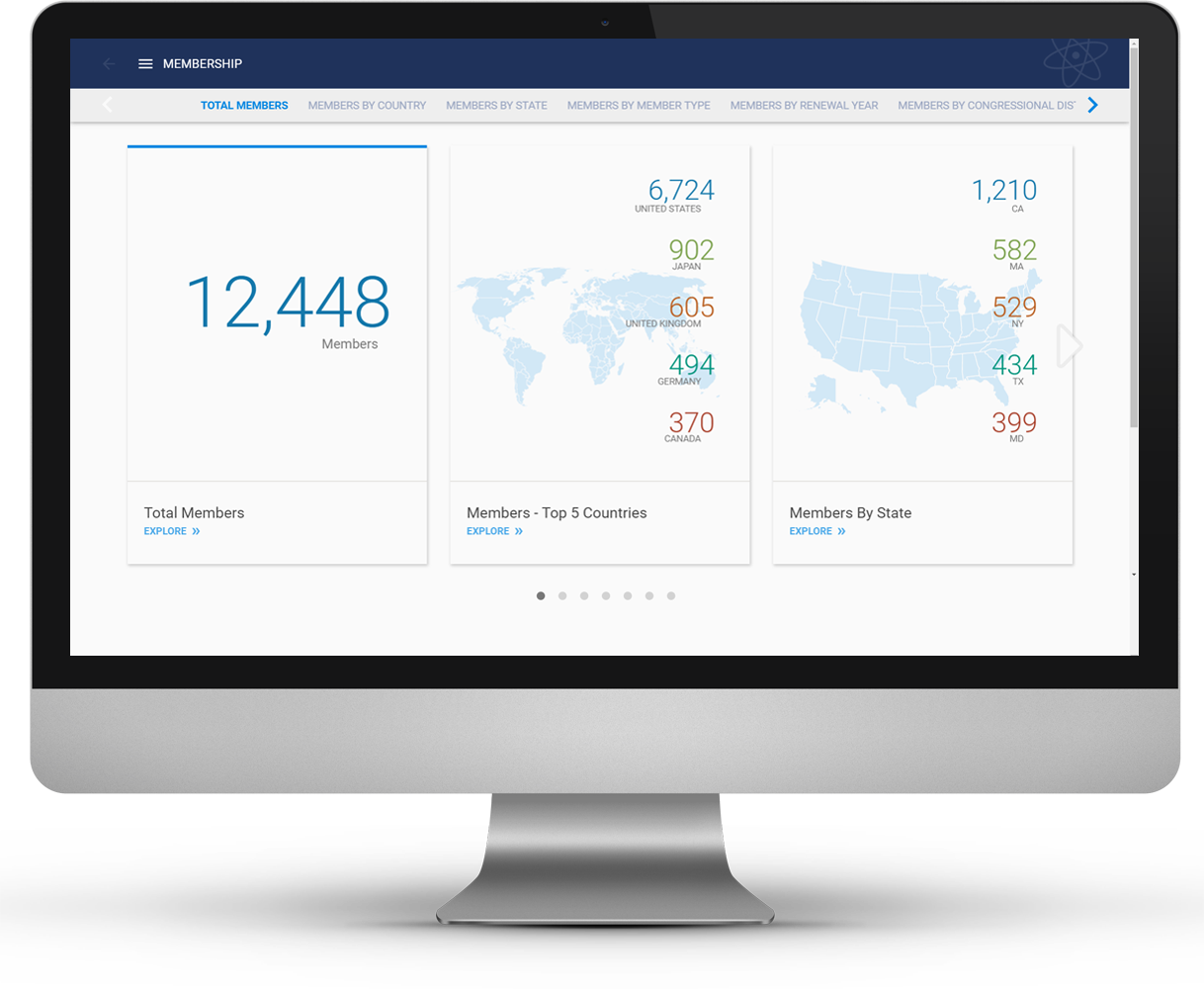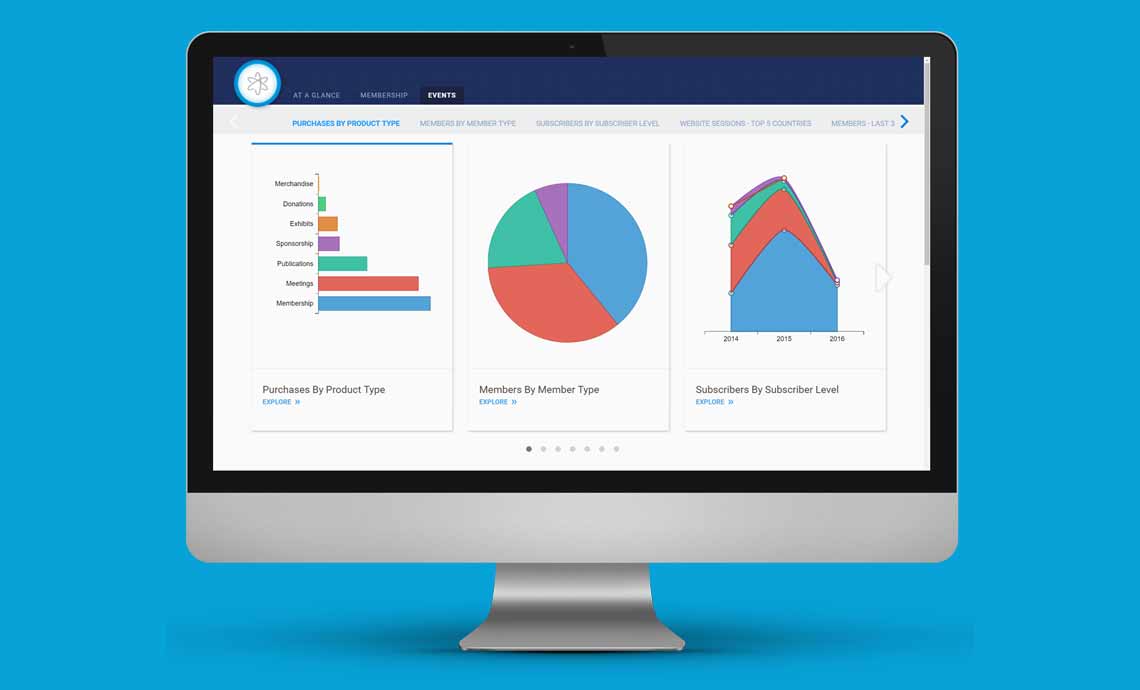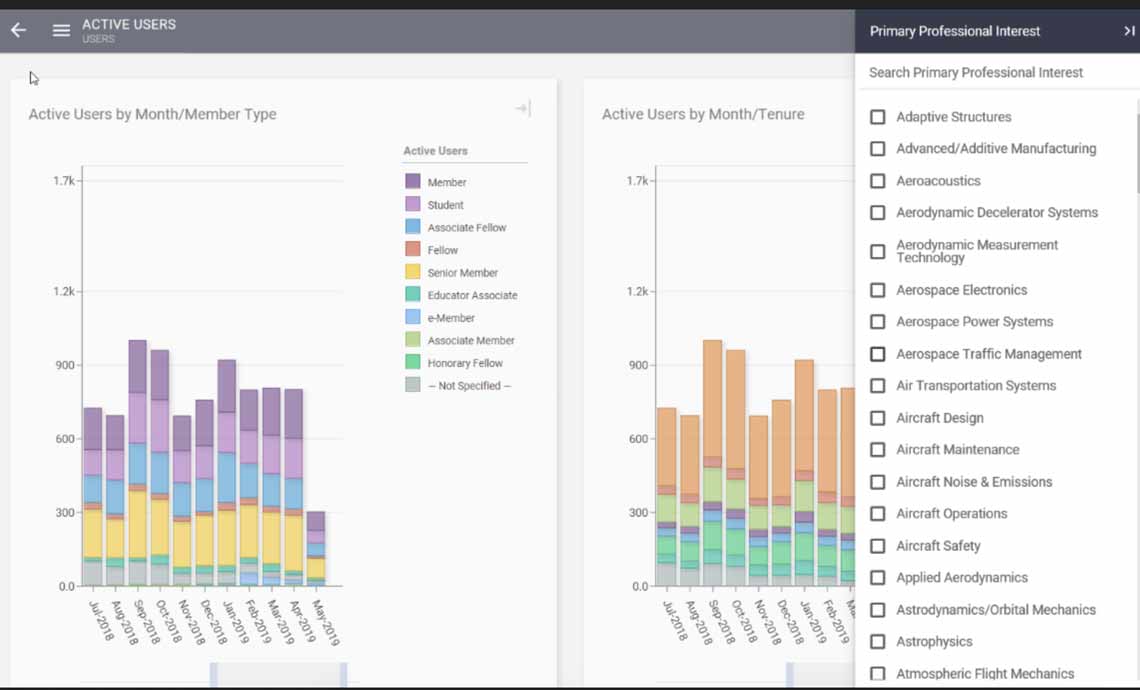I attended Association Trends’ AMS Fest June 5-6th in Chicago at the Catalyst Ranch. The facility and its furniture were a little quirky (think: Central Perk Café in the sitcom Friends) but worked well for the size of the group, which was about 160. I enjoyed seeing a lot of old friends and colleagues from the years when Gravitate’s CEO (Tim Ward) and I were developing NetForum while at Avectra. I was also inspired by the technical advances many of the companies discussed and demonstrated.
These are my people : )
It means a lot to me to see AMS systems do more and more for the member industry, and they are!
The staff at Association Trends announced that there are now over 60 association management systems (AMS) on the market, with close to 20 capable of meeting most needs even at complex associations. That’s good news for associations, as the competition should drive innovation and minimize costs. There is also a consolidation trend shaking up the market in which larger players have been gobbling up some of their competitors. This has created some uneasiness in the market, but the acquiring vendors appear to be expanding and supporting most of the systems, which has allowed most affected associations to take a wait-and-see posture on their AMS investment.
Association Trends conducted a survey of the registrants and reported that the primary challenges related to AMS implementation today are:
1) Customizing the platform to meet specific needs
2) Building reports
3) Integrating the platforms with other services
Regarding customization, it’s worth saying that as a longtime implementer of AMS solutions, we recommend that associations stick as close to a product’s baseline functionality as possible. They will typically be better served in the long term because upgrades tend to be easier and upgrades often include new features that provide the desired functionality.
Regarding challenge #2, it doesn’t surprise me that “building reports” is so frequently problematic. It is slow and costly to build reports on the classic highly-normalized relational databases that AMS systems are based upon because they are simply not good platforms for data analysis, trend reporting, or business intelligence.
A disconnect has developed – we used to think of the AMS system as the logical central repository for association data. I certainly did, and that was true for a very long time. Today, however, that doesn’t work for two reasons – there are too many other kinds of useful member data and the volumes of this data are enormous.
If your association is like most, you use an email marketing system, an events system, perhaps an online community, perhaps an LMS or CMS, etc. – each of these generates valuable information about your constituents’ interests and activities and you won’t have a complete overview unless you incorporate all of it into your reporting. AMS systems, however, have never been built to properly handle complex, non-transactional data such as this.
It is also asking too much of your AMS to accommodate the volumes of external member data generated today.
At a typical association in 2019, AMS data represents only about 20% of the data that should be incorporated into reporting.
AMS systems are very good at doing what they were built to do, but storing vast amounts of non-transactional data is not one of those things. Further, non-AMS data is growing faster than AMS data, so this problem is only going to worsen over time.
This isn’t unique to the member industry, by the way – relational database systems face these same limitations in the private sector.
Fortunately, there is a better way.
We recommend that you continue to allow your AMS to do what it does best – collect and store simple transactional information. But for actual reporting, deploy a data analytics platform like Nucleus.
You’ve heard of the data warehouse, which is an approach to bringing together and storing data to make it available for reporting. That approach was developed in the late 1980s.
The term “data lake” was coined in 2010 to describe what we find to be a much better approach. This Gravitate blog from two years ago (June 2017) titled “Data Lake vs. Data Warehouse and Why It Matters” will be interesting and useful for anyone wanting to know more about why data analytics and reporting has become so much easier and better.
Keeping the focus specifically on association reporting, here is a comparison – rather than trying to build a membership report in your AMS, which will likely include four or five criteria just to identify a member (member = regular, status = active, paid through date in the future, 5 years of professional experience, etc.), the data lake can just mark the appropriate records as members upon import – which makes subsequent reports, dashboards and KPIs easy to construct. A data lake also allows you to accurately report and compare historical activity. Snapshots of monthly or quarterly financial information can be imported into the system, which preserves the data in its original state. Unfortunately, transactional AMS solutions continually alter the data, spoiling any value for historical reporting.
Data analytics solutions like Nucleus also have the answer to many of the integration challenges facing associations. When member data has been pulled from every relevant source and blended in a data lake, you immediately have full transparent access to everything! For example, you can inspect and evaluate behaviors taking place in your private community through lenses and filters from your AMS (i.e. membership, generation, tenure, etc.), your email marketing solution (opened or clicked on content), or a survey (responded “yes” to a key association initiative). This can produce powerful insights that inform decision-making and planning. An engineering association might learn, for example, that millennials in their field are most interested in content about software security because they are posting about it in the social community.
Without the data from your AMS blended with data from your community, you would never know that this demographic has a special interest in this topic. But if you did, wouldn’t you create some content directed at them such as a webinar, a session at a conference, or a written analysis?
Associations who take advantage of a data analytics platform can address two of the top three AMS challenges identified in the survey. In fact, data analytics can help turn reporting and integration from challenges into strategic advantages. As someone who has dedicated his career to associations and association technology, I’m excited by this enhanced ability to understand member behaviors and needs.
Now if only we can convince AMS steering committees to drop all those ridiculous customizations, we’d have a trifecta : )


